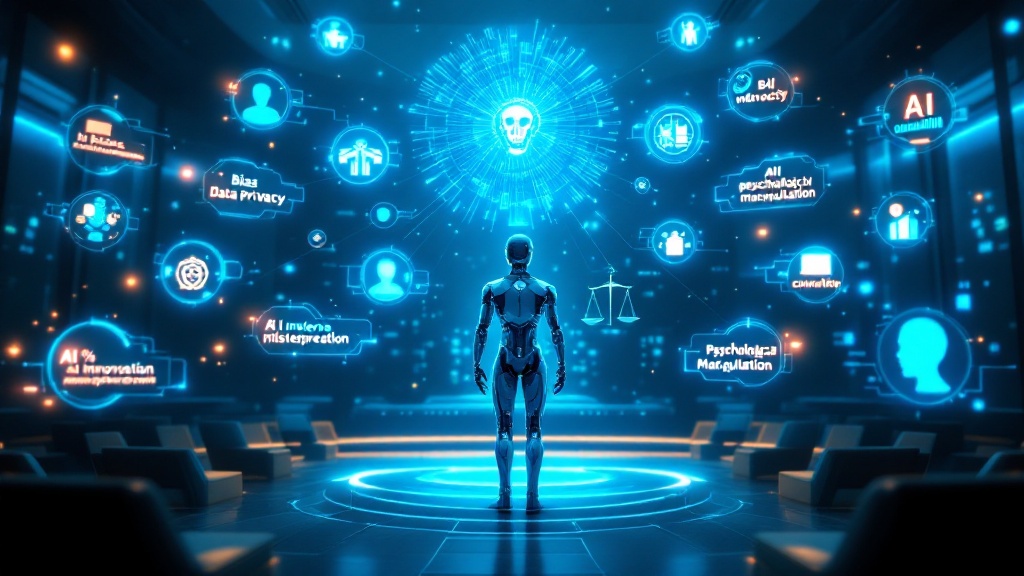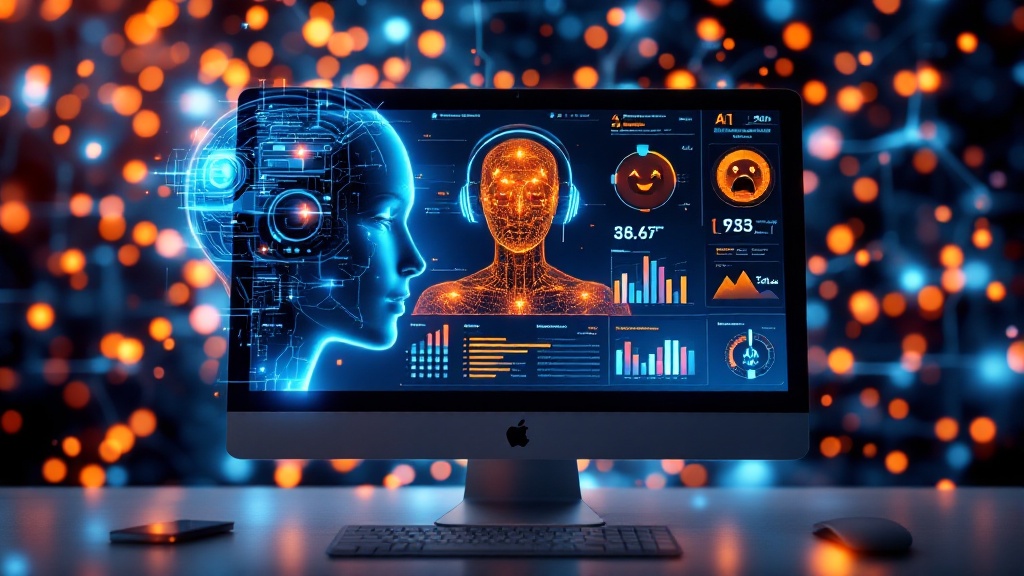Introduction
In recent years, rapid advancements in AI have showcased impressive capabilities in language processing, decision-making, and automation. However, one major challenge remains—accurately understanding context and emotions like humans do. Conventional AI models often struggle with interpreting subtle nuances, emotional tones, and situational context, leading to responses that may feel robotic or inappropriate. Fortunately, recent innovations are bridging this gap, making AI more context-aware and emotionally intelligent. This blog explores how AI is evolving to grasp human emotions and contextual meaning, transforming industries and interactions.

The Importance of Context in AI Understanding
Context plays a fundamental role in human communication. A word or phrase can have different meanings depending on the situation, tone, and cultural background. For instance, the word "bank" could refer to a financial institution or the side of a river, depending on context. AI models must analyze surrounding words, prior conversation history, and even non-verbal cues to derive accurate meanings.
Modern AI achieves context-awareness through:
Transformer-based models like GPT and BERT, which use self-attention mechanisms to process entire text sequences rather than individual words in isolation.
Conversational memory, allowing AI to retain and recall past interactions, enhancing the flow of dialogue.
Semantic analysis, enabling AI to differentiate between literal and figurative meanings based on contextual cues.
Real-time context adaptation, where AI dynamically adjusts responses based on new input, making conversations more fluid and coherent.

How AI Detects and Interprets Human Emotions
Emotion recognition in AI is a growing field that integrates Natural Language Processing (NLP), sentiment analysis, and multimodal learning. AI can detect emotions through:
Text-based sentiment analysis, where algorithms assess the tone of written or spoken words to determine emotions like happiness, anger, or sadness.
Voice tone recognition, which analyzes pitch, speed, and vocal stress to interpret emotional states.
Facial expression analysis, using computer vision to detect emotions in visual data.
Physiological signal interpretation, where AI analyzes heart rate and body language to infer emotional states.
By combining these approaches, AI can recognize subtle emotional cues and adjust its responses accordingly. This capability is particularly useful in industries like customer service, healthcare, and mental health support. Emotionally intelligent AI can de-escalate frustrated customers, provide appropriate therapeutic interventions, or enhance user engagement in virtual assistants and chatbots. Additionally, AI-driven sentiment analysis helps businesses monitor brand perception by analyzing customer feedback, reviews, and social media discussions.

Machine Learning Models Driving Contextual Awareness
AI’s improved contextual awareness is primarily driven by advanced machine learning techniques such as:
Deep Learning: Neural networks analyze vast amounts of data to identify patterns and enhance understanding.
Reinforcement Learning with Human Feedback (RLHF): AI learns from human interactions and refines its responses over time.
Knowledge Graphs: These structures enable AI to store and retrieve interconnected information, helping it understand concepts beyond basic language processing.
Transformer Models: Technologies like GPT-4 and ChatGPT utilize large-scale data training to generate contextually relevant and coherent responses.
Multimodal Learning: AI models combine text, audio, and visual data for a more holistic understanding of context and emotion.

Real-World Applications of Emotionally Intelligent AI
AI’s ability to comprehend context and emotions is transforming multiple industries, including:
Customer Support: AI-powered chatbots can gauge customer frustration levels and escalate issues to human agents when necessary.
Mental Health Support: AI-driven therapy bots analyze users’ emotional states and provide appropriate support or referrals.
Marketing and Advertising: AI personalizes content by understanding customer sentiment and preferences.
Human-Computer Interaction: Virtual assistants are evolving to detect emotional cues and improve user experience.
Education: AI tutors assess student engagement levels and adapt learning materials accordingly.
Healthcare: AI monitors patient interactions, detecting signs of stress or distress to provide better care recommendations.
Entertainment and Gaming: AI adapts storylines and interactions based on user emotions, enhancing immersive experiences.

Ethical Challenges and Considerations in Emotionally Intelligent AI
Despite these advancements, several challenges remain:
Bias and Misinterpretation: AI models trained on biased data may misinterpret emotions or context, leading to inappropriate responses. If the training data lacks diversity, AI may struggle with cultural or linguistic nuances, leading to misunderstandings.
Privacy Issues: Emotionally intelligent AI often requires access to personal data, raising ethical concerns about consent and security. Collecting and storing biometric data such as facial expressions, voice recordings, and physiological signals can pose risks if not managed responsibly.
Over-reliance on AI: Excessive dependence on AI for emotional interactions may diminish genuine human connections. This is particularly concerning in areas like mental health, where human empathy and intuition play a vital role.
Lack of True Emotional Understanding: AI does not “feel” emotions but rather analyzes patterns, which can sometimes lead to unnatural or misguided responses. The inability to truly empathize can result in mechanical or impersonal interactions, especially in sensitive situations.
Regulatory and Ethical Dilemmas: The use of AI in sensitive areas like mental health and law enforcement raises concerns about fairness, accountability, and bias mitigation. Without proper regulations, AI-driven emotion recognition could be misused, leading to ethical violations or discrimination.
Potential for Manipulation: AI’s ability to read and influence emotions raises concerns about psychological manipulation in advertising, political campaigns, and social engineering. If misused, AI could be employed to exploit emotional vulnerabilities for unethical purposes.
To address these challenges, developers must implement ethical AI frameworks, ensuring transparency, fairness, and responsible data usage. Regulatory policies must also evolve to protect user data and prevent misuse of emotion-detecting AI. Ongoing research is crucial to refining AI’s ability to interpret emotions accurately while respecting user privacy and ethical considerations.

Conclusion
The evolution of Artificial Intelligence toward greater context-awareness and emotional intelligence marks a significant step forward in human-computer interactions. By integrating advanced NLP, deep learning, and sentiment analysis, AI is becoming more adept at understanding the intricacies of language and emotions. While challenges persist, ongoing research and ethical considerations will be crucial in shaping AI that is not only intelligent but also empathetic and contextually aware. As AI continues to advance, its role in enhancing communication, customer service, and mental health support will only expand, making it an invaluable tool in our daily lives. However, responsible AI development, data privacy safeguards, and human oversight remain critical in ensuring a balanced and beneficial integration of AI into society.

